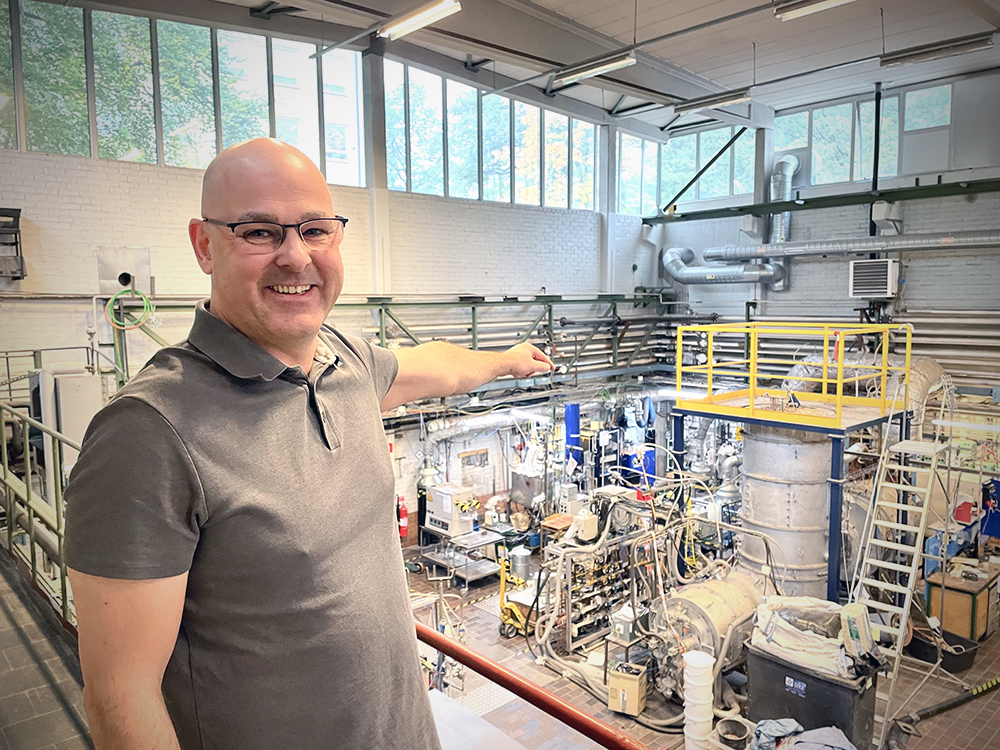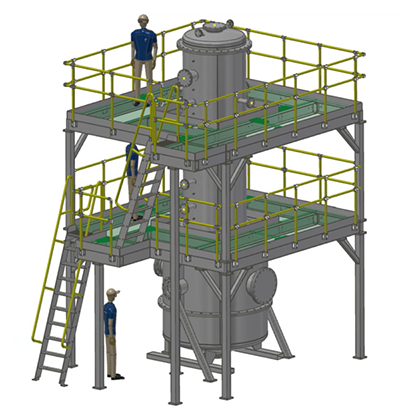Here starts the silicon challenge against China

The start-up company Green14 wants to challenge Asia's silicon dominance in the market for solar cells and enlists the help of KTH. At the Department of Materials Science, the company are building a seven-meter-high reactor that will produce green silicon.
In just a matter of months, a 7-meter-high reactor is set to begin construction in the furnace hall at the Department of Materials Science (MSE), marking one of the biggest pilot equipment projects at campus KTH.
The reactor tower aims to pioneer a new era in silicon production – a process that will be more environmentally friendly and faster than old ones. Powered by as much as 3000-degree hot hydrogen plasma, this reactor will transform silicon dioxide into high-purity silicon, a critical component in manufacturing solar cells and semiconductors. Unlike traditional methods using fossils, the process will generate water vapor as a byproduct instead of carbon dioxide emissions.
The initial objective for Green14 is to manufacture silicon suitable for solar cells, a market that Asia, particularly China, has predominantly dominated.
"This marks a first attempt to produce environmentally friendly and cost-competitive silicon on a pilot scale. If successful, it could be a game-changer. It could potentially bring Europe back into the business," says Björn Glaser , associate professor at MSE with expertise in high-temperature metallurgical experimental investigations and the project's leader at KTH.
Successful trials
Green14 contacted KTH in May. After successful trials, the two owners want to develop a scalable process. Green14 will own and operate the plant and rent part of the furnace hall, and Björn Glaser and Adam Podgorski, Australian chemist and the CEO of Green14, will work closely together on research lines in plasma metallurgy and powder metallurgy. Jan Dinkelspiel, Chairman of Green14, oversees the investment side of the project. If the project is successful, Green14 will build a large-scale facility with Nordic renewable energy.

One crucial challenge in this project, Glaser points out, is safety.
"The combination of high temperature and hydrogen gas is always a risk."
To ensure safety and compliance with stringent regulations, the project team has contracted an external company to oversee the setup and safety protocols.
Unique opportunity
For KTH, this partnership not only promotes KTH and enable joint research projects, but also offers a unique opportunity for students to engage in groundbreaking research. However, the real potential implications of this project extend far beyond silicon production and engaged students.
“If we are successful, the process could revolutionize the way other metals, such as copper, titanium and vanadium, are produced. This would decarbonize these value chains, reducing their carbon footprint while remaining cost-competitive,“ Glaser explains.
"I am rather convinced we will make this work. However, there's always an element of risk – it’s the nature of research."
Text: Anna Gullers

